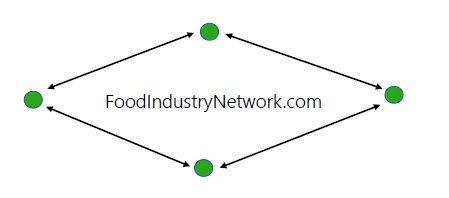Genetic engineering of microbes lower fertilizer dependence

Helping crops acquire nitrogen from the air could be a sustainable solution to meeting crop nutrient requirements with less synthetic fertilizer.
Read Also

Colombia opens small ruminant export opportunities
Canadian sheep and goat farmers have more access to export markets due to recent approval to ship frozen semen to…
A team of bacteriologists and plant scientists from the University of Wisconsin-Madison have written a paper that discusses the possibility of using genetic engineering to facilitate mutualistic relationships between plants and nitrogen-fixing microbes called diazotrophs.
Engineering such associations would help crops acquire nitrogen from the air by mimicking the mutualisms between legumes and nitrogen-fixing bacteria.
Diazotrophs are species of soil bacteria and archaea that naturally “fix” atmospheric nitrogen into ammonium, a source that plants can use. Some of these microbes have formed mutualistic relationships with plants whereby the plants provide them with a source of carbon and a safe, low-oxygen home, and in return, they supply the plants with nitrogen.
For example, legumes house nitrogen-fixing microbes in small nodules on their roots.
However, these mutualisms only occur in a small number of plants and a scant number of crop species. If more plants were able to form associations with nitrogen fixers, it would lessen the need for synthetic nitrogen fertilizers, but these sorts of relationships take eons to evolve naturally.
How to enhance nitrogen fixation in non-legume crops is an ongoing challenge in agriculture. Several different methods have been proposed, including genetically modifying plants so they themselves produce nitrogenase, the enzyme that nitrogen fixers use to convert atmospheric nitrogen into ammonium, or engineering non-legume plants to produce root nodules.
An alternative method — the topic of the review — would involve engineering both plants and nitrogen-fixing microbes to facilitate mutualistic associations. Essentially, plants would be engineered to be better hosts, and microbes would be engineered to release fixed nitrogen more readily when they encounter molecules that are secreted by the engineered plant hosts.
“Since free-living or associative diazotrophs do not altruistically share their fixed nitrogen with plants, they need to be manipulated to release the fixed nitrogen so the plants can access it,” the authors write.
The approach would rely on bi-directional signaling between plants and microbes, something that already occurs naturally. Microbes have chemoreceptors that allow them to sense metabolites that plants secrete into the soil, while plants are able to sense microbe-associated molecular patterns and microbe-secreted plant hormones.
These signaling pathways could be tweaked via genetic engineering to make communication more specific between pairs of engineered plants and microbes.
The authors also discuss ways to make these engineered relationships more efficient. Since nitrogen fixation is an energy-intensive process, it would be useful for microbes to be able to regulate nitrogen fixation and only produce ammonium when necessary.
Many nitrogen-fixing microbes could provide additional benefits to plants beyond nitrogen fixation, including promoting growth and stress tolerance. The authors say that future research should focus on “stacking” these multiple benefits.
The authors acknowledge that genetic modification is complex and the large-scale use of genetically modified organisms in agriculture would require public acceptance.
There’s also the issue of biocontainment. Because microbes readily exchange genetic material within and between species, measures will be needed to prevent the spread of transgenic material into native microbes in surrounding ecosystems.
Several such biocontainment methods have been developed in the laboratory, for example, engineering the microbes so they are reliant on molecules that are not naturally available, meaning that they will be restricted to the fields in which the engineered host plants are present, or wiring the microbes with “kill switches.”
The authors suggest these control measures might be more effective if they are layered, since each measure has its limitations, and they stress the need to test engineered plant-microbe mutualisms under the variable field conditions in which crops are grown, rather than in controlled environments such as greenhouses.
Source: Farmtario.com

